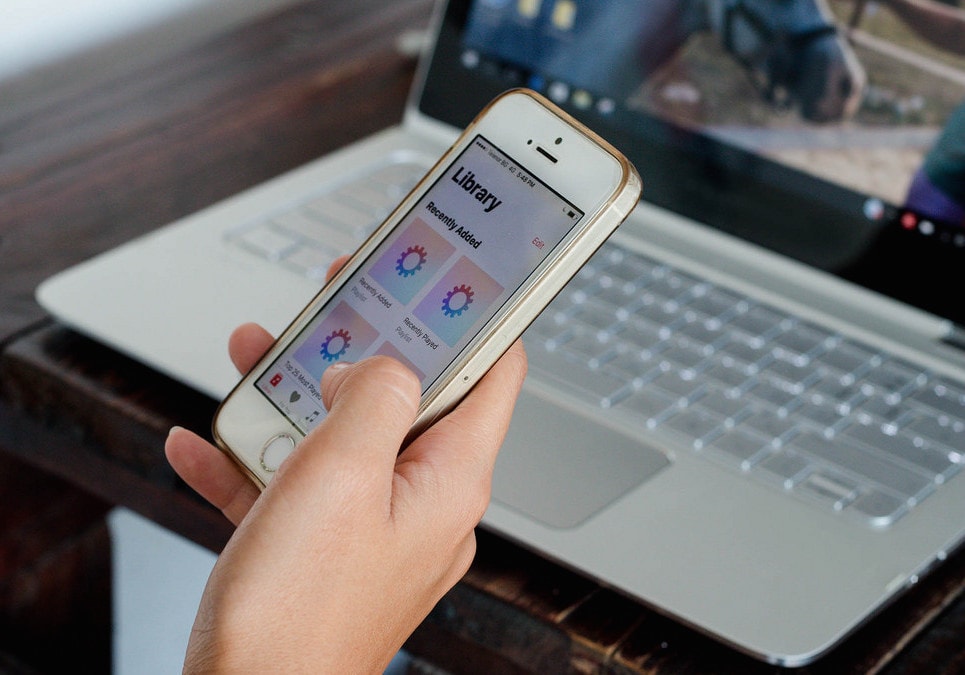
Thanks to the advances in technology over the years, many people find themselves looking at their smartphone or laptop almost 24 hours a day. While scrolling through social media is a fun activity, the act of constantly looking at your phone might actually be making you age faster.
The Parts of the Body that are Impacted
The face is impacted by constantly looking at a smartphone or laptop. However, the face is not the only part of the body that suffers thanks to this activity. The constant use of technology can also cause wrinkles in the neck and shoulders. On a non-cosmetic level, deformed bones and joints can occur because of bending your fingers and/or holding a device all day long.
Tech Neck
Since most people are expected to be accessible to technology 24/7 while at work or at home, they often pay a price for maintaining constant accessibility. People often stay hunched over their smartphones with their neck and shoulders strained while their thumbs are constantly in motion. The type of position where people have their heads hanging while their shoulders are hunched over is called “tech neck”.
The problem of repetitive stress injury from looking down at a mobile device for long periods of time is not new to patients. The phrase “text neck” was coined a few years ago to describe the issue of pain in the neck and spine as well as headaches and a hunched back. However, “tech neck” takes these issues a step further by including all of the above issues while also adding in the problem of developing wrinkles on the neck area.
According to multiple doctors, “tech neck” can cause serious changes to the facial appearance of a person that goes beyond wrinkles. Some of the conditions that can result include frown lines, bags under the eyes and horizontal lines on the neck as well as more prominent fat that takes the form of sagging jowls.
Is There a Treatment for these Issues?
There are times that the changes in appearance caused by “tech neck” can be so severe that patients have to turn to cosmetic surgery to try and find a solution.
When it comes to the wrinkles that are caused by staring at a smartphone, some patients turn to Kybella to try and make a change in their look. Kybella is a good option for patients who suffer from a double chin as well as excess fat in the midline area. The injections used during Kybella work to destroy fat cells and help to reduce the appearance of a double chin.
It is also a good option for patients that want to address the issue of jowls and a double chin but they don’t want to have any kind of invasive surgery on the area. Kybella can be performed in the office of a doctor and it requires no downtime on the part of the patient. Multiple treatments might be necessary to achieve the desired results so patients should be aware of the time commitment of having to schedule more than one treatment appointment.
Lipolysis of the Neck
The neck can be tightened and rejuvenated through a combination of microneedling and highly focused radiofrequency waves that work on the loose skin as well as the deeper layers of the skin. The procedure triggers the natural healing process of the body and reduces wrinkles by tightening the skin.
The ultrasound waves are focused on the superficial muscular aponeurotic system (SMAS) portion of the face. This is the layer that holds the skin up and supports it so it is the strongest layer in the face. The treatment can performed in under an hour and the results can last for up to 18 months.
Consult with a Board-Certified Doctor
Before patients undergo any type of treatment for “tech neck” or other conditions related to the 24/7 use of smartphones and laptops, they should consult with a board-certified doctor who treats these cases on a regular basis.
The doctor can examine the patient and determine the severity of the condition before making a decision on the best treatment option. The doctor will also set realistic goals with the patient so he, or she, will know what to expect and not be disappointed with the final results.
MA